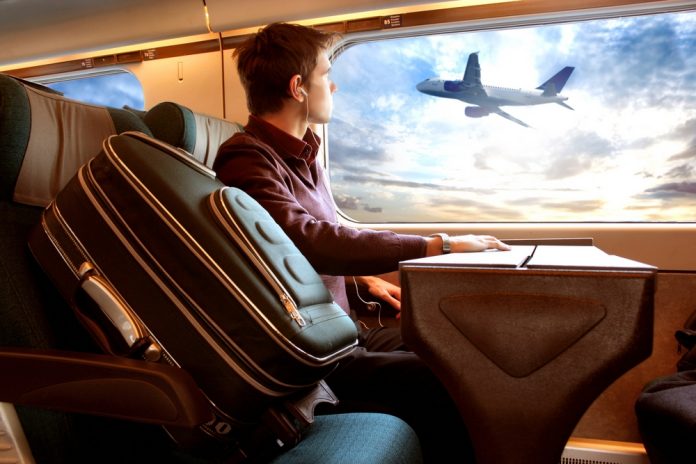The study urges European countries considering banning short-haul flights to take a wide range of factors into consideration.
A new study commissioned by European aviation organizations asserts that the push to replace short-haul airline routes with rail transport to reduce carbon emissions is much more complicated than proponents of the idea acknowledge.
For one, according to the study, the benefits in reducing carbon dioxide emissions via a modal shift on journeys of around 500 km is “not straightforward” given the high CO2 footprint associated with railroad construction and maintenance. Secondly, according to the study, it is not practical to fully shift modes on short-haul routes because rail has neither the network depth nor the capacity to handle all of the passengers now using airlines to travel these routes.
The study was produced by the economics and financial consultancy Oxera and commissioned by the European Regions Airline Association (ERA), Airports Council International-Europe (ACI-Europe), the AeroSpace and Defense Industries Association of Europe (ASD Europe), the Civil Air Navigation Services Organization (CANSO) and Airlines for Europe (A4E).
As the study notes, there are a number of proposals in Europe to ban flights of up to 500 km, pushing passengers on these routes to rail options. But, Oxera’s study says, a modal shift of this kind means existing rail lines will be strained to provide enough capacity, likely leading to the building of more train tracks and infrastructure.
“Building new railway lines has a high environmental cost due to the CO2 emissions associated with cement and steel production, and emissions from the fuel used for construction,” Oxera states. “A significant increase in the number of passengers on the rail network is likely to exceed the capacities of existing railways in many cases, and may require the construction of additional rail infrastructure with large CO2 costs.”
Further, the study asserts, many passengers will instead switch from air to car rather than air to rail. The per passenger CO2 footprint is higher for automobile drivers/passengers than airline travelers, according to Oxera, which also notes that the per trip, per passenger footprint is lower traveling by rail compared to air.
The other major issue, the report says, is that rail capacity cannot handle the modal shift–either in terms of occupancy of train cars or the breadth and depth of rail networks.
The study uses the route between Berlin and Munich as an example since it is served by both air and rail. “Connectivity and journey duration are not barriers to modal shift in this case,” Oxera says. However, only 26% of current air passengers on the highly-traveled German route “could be accommodated on the rail network based on current [train] timetables,” the report states. “This leaves 22,000 passengers per week unaccommodated. If rail services were increased from four to six trains per day during weekdays, matching the number of services that run on weekends, only 42% of [air] passengers could be accommodated.”
The report asserts that this mismatch in capacity will make a modal shift challenging throughout Europe. Additionally, Berlin-Munich is an example of a city-pair that has both robust air and rail links. Oxera points out that many European city-pairs served by airlines do not have equivalent rail connectivity.
“In Italy, which is considering banning all short-haul flights where there is a direct train connection of less than 2.5 hours, the [high-speed rail] network mainly consists of a corridor from Turin to Naples,” the report says. “By contrast, the Italian airport network consists of around 40 airports with regular passenger traffic.”
There are other instances in which geography means rail connections are going to be significantly longer than flights, Oxera adds.
The report calls for a more nuanced discussion of the short-haul air to rail modal shift envisioned in Europe, taking into account a variety of factors, including overall environmental impact and the lack of rail capacity.
ACI-Europe said in a statement that the Oxera report “highlights the fact that the picture is far more complex than simply shifting from one transport mode to another.”
























